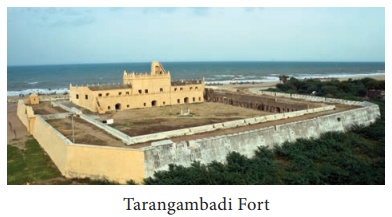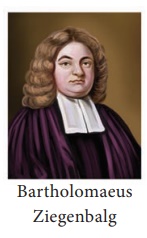Arrival of Europeans and the Aftermath - The Danes | 11th History : Chapter 16 : The Coming of the Europeans
Chapter: 11th History : Chapter 16 : The Coming of the Europeans
The Danes
The Danes
Denmark and Norway (together till 1813) possessed
colonial settlements in India and Tamil Nadu. Tarangambadi or Tranquebar in
Tamil Nadu, Serampore in West Bengal and Nicobar Islands were their possessions
in India. On March 17, 1616 the King of Denmark, Christian IV, issued a charter
and created a Danish East India Company. This Company did not get any positive
response from the Danish traders. Admiral Ove Gjedde led the first expedition
to Ceylon in 1618. The Danes could not get any trade contract in Ceylon. While
they were returning in disappointment their main vessel was sunk by the
Portuguese at Karaikkal. Thirteen stranded sailors with their trade director
Robert Crappe were taken to the Nayak ruler of Thanjavur. Robert Crappe ably
negotiated with the Thanjavur King and struck an agreement. According to the
agreement signed on 20 November 1620, the Danes received the village of
Tarangambadi or Tranquebar and the right to construct a Fort there.

The Danish fort at Tarangambadi was vulnerable to
high tidal waves which frequently damaged roads and houses. Despite their
involvement in the Thirty Years War and the financial loss they suffered, the
Danish managed to set up a factory at Masulipatnam. Small trading posts were
established at Pipli (Hoogly River) and Balasore. Investors in Denmark wanted
to dissolve the Danish East India Company, but King Christian IV resisted it.
Finally after his death in 1648 his son Frederick abolished it.
A second Danish East India Company was started in
1696. Trade between Denmark and Tarangambadi resumed and many new trade
outposts were also established. The Nayak king of Thanjavur gifted three more
villages surrounding Tarangambadi. Two Danish Missionaries, the first protestant
missionaries, arrived on 9 June 1706. The Danish settled in Andaman and Nicobar
in 1755, but due to the threat of malaria they abandoned it in 1848. During the
Napoleonic wars the British caused heavy damage to their possessions. Serampore
was sold to the British in 1839 and Tranquebar and other settlements in 1845.
The Danes in Tamil Nadu
The Danish Fort built in Tarangambadi is still intact. Bartholomaeus Ziegenbalg along with Heinrich Pluetshau arrived in Tranquebar in September 1706, as the first Lutheran missionaries in India. They began preaching, and baptized their first converts within ten months of their stay. Their work was opposed both by Hindus and by the local Danish authorities, and in 1707-08 Ziegenbalg had to spend four months in prison on a charge that by converting the natives he was encouraging rebellion.
The Copenhagen Missionary Society wanted to encourage an indigenous Christian Church, and accordingly instructed its
missionaries simply to preach the Gospel, and not to bother about other
matters. Ziegenbalg, however, contended that a concern for the physical welfare
of “others” was implicit in the Gospel.

Ziegenbalg set up a printing press, and published
studies of the Tamil language and of Indian religion and culture. His
translation of the New Testament into Tamil in 1715 was first in any Indian
language. The church building that he and his associates constructed in 1718 is
still in use today. He succeeded in establishing a seminary for the training of
local clergy. When he died on 23 February 1719, he left behind a full Tamil
translation of the complete Bible and of Genesis to Ruth (Bible Story book
series), many brief writings in Tamil, two church buildings, the seminary, and
250 baptized Christians.
Related Topics